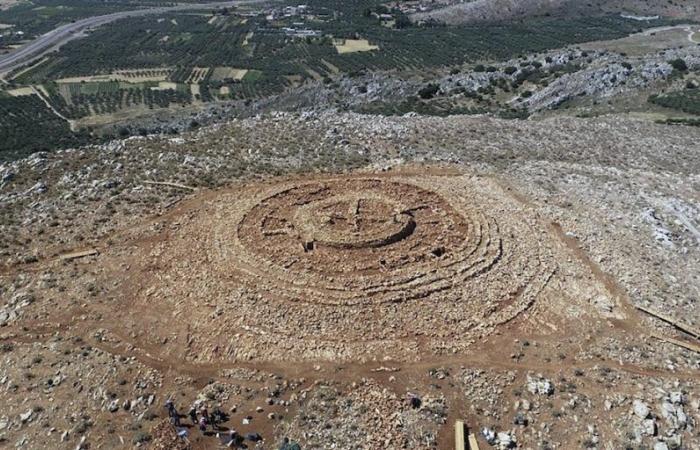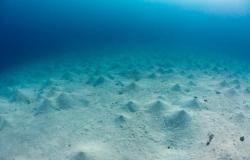Loading player
About a week ago on the Greek island of Crete, a large ancient ruin was discovered during construction of an airport. According to the archaeologists who are working on them, they are the remains of a structure used mainly between 2000 and 1700 BC, it is not known for what purpose, when Crete was inhabited by the so-called Minoan civilisation. The structure extends for approximately 1,800 square meters and is round in shape.
The Greek Ministry of Culture described the ruin as “a unique find” to be protected “absolutely”. The shape of the structure has led many to compare it to a labyrinth, a legendary structure that some ancient Greek myths associate with Crete. It will take many years to study it in depth and understand who built it and what it was used for.
Discoveries of this kind, however, are quite rare: “What is certain is that the building belongs to an important period in Crete,” he told the Messenger the archaeologist Massimo Cultraro, expert on Crete and Minoan civilisation: «the famous formative moment, lively, rich in contacts with the civilizations of the Cyclades and the rest of the Mediterranean, which saw the birth on the island of extraordinary imposing buildings in the space of a few decades structures that we call the “Minoan palaces” of Knossos and Phaistos.”
(AP Photo)
The famous palaces of Knossos and Phaistos are among the most important archaeological sites of the Minoan civilization, visited every year by thousands of tourists and curious people. Both were built by the so-called Minoan civilization, i.e. the non-Greek ethnic one, which spoke a non-Greek language (transcribed in Linear A, a writing system still not deciphered) and which was subsequently identified with the name of a king who perhaps never existed , Minos.
The newly discovered structure has some characteristics comparable to those of Minoan tombs, conical in shape, elongated upwards and built with stones. The Ministry of Culture said that according to a preliminary hypothesis it is thought that the structure was used for religious rites, perhaps with sacrifices and consumption of food and wine: many animal bones were found inside, and due to the quantity and type of finds it seems unlikely, at least for now, that the structure was a home.
The uniqueness of the ruin is also given by the dimensions, the architectural layout and the amount of work required for the construction of the structure, which according to archaeologists required specialized knowledge and the organization of a strong centralized administration. These are all elements consistent with the information available to us on the Minoan civilization, which had a so-called “palatial” economy: the palaces of Knossos and Phaistos were probably centers of power but also of redistribution of food and other resources, as part of a highly centralized economic system. Until now, however, such a large round-shaped structure had never been discovered in Crete, which almost certainly had a different use than the “palaces”.
The Ministry of Culture said it had discussed the ruin and above all how to proceed with the airport works in a joint meeting with the authorities responsible for the archaeological heritage of Crete, the Ministry of the Interior and the directorates responsible for ancient finds and their maintenance , as well as with the Ministry of Infrastructure and Transport.
According to the plans, the construction of the new airport should be completed by 2027 and serve around 18 million passengers a year, including many tourists interested in visiting the archaeological heritage of the area. It is unclear how the work will proceed now that the site has been discovered: in Greece, as in other countries with a rich archaeological heritage, construction work on new infrastructure is often interrupted or modified by the discovery of finds. The government has specified that so far, during the works to build the airport itself, around thirty other archaeological sites have been discovered.
The Ministry of Culture has said that the work can proceed, taking the necessary measures to protect the ruins and allow the necessary investigations, but it is not clear how this can be accessed and in what timeframes. At the point where the ruin was discovered, on top of a hill, a radar station should have been built: the Greek Minister of Culture Lina Mendoni, an archaeologist, has asked that it be built elsewhere.






